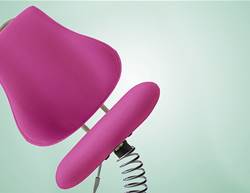Sitting for long periods of time is proven to have a plethora of negative health effects, from obesity and high blood pressure to abnormal cholesterol levels and even risk for heart disease and cancer. One 2017 study found that there's a direct connection between how sedentary one's lifestyle is and risk for early death. And interestingly enough, a 2015 study found that prolonged sedentary time had negative health outcomes regardless of one's physical activity - basically, hitting the gym for an hour doesn't negate the damage done from sitting at a desk for eight hours straight.
The solution: find ways to move more throughout the day. You'll ward off diseases, feel better overall, and shed kilos (if you're looking to do that). After all, standing versus sitting for six hours burns an extra 225kJ (54cal) per day for a 65kg person, and that adds up! Here are 30 easy ways to move more on a daily basis.

Paul Bradbury ©Getty Images
Drink lots of water
More water = more bathroom breaks, and another excuse to get up and stretch your legs. For bonus points, walk to bathroom on a different floor and use the stairs. Besides, water has so many other benefits, from boosting your mental performance to leaving your skin youthful and radiant, so it's a win-win situation.

Paul Bradbury ©Getty Images
Walk and talk on the phone
Whether you're taking a personal call at work or calling your mum on a Saturday, get up and head outside with your phone! Why waste a half-hour call by sitting when you could take an invigorating stroll?

Paul Bradbury ©Getty Images
Take lunch outside
Order lunch from somewhere near your office, then walk over to pick it up. Even if you've packed lunch from home, you can take it to a nearby park or other outdoor space to soak in some sunlight and get in the extra steps. Take a brisk walk before heading back inside to give your metabolism a helpful boost.

Paul Bradbury ©Getty Images
Get a standing desk
If your office has standing desks available, try to snag one for yourself. Many of these are convertible so that you can sit and then stand intermittently. Using a standing desk often encourages people to move more in other ways throughout the day - but don't overdo it. "Too much of anything can be detrimental. There is a consensus in my field that people should try a standing desk for two to four hours a day. Start with short increments and listen to your body," physiotherapist Amy McGorry told Prevention previously.

Paul Bradbury ©Getty Images
Suggest walking meetings
Need to chat with a colleague? Instead of shooting them an email or meeting in a conference room, ask if they'd like to walk and talk somewhere in the building or outside. Various studies have shown that walking has a beneficial effect on creative thinking by pumping more blood and oxygen around your body, including your brain. Plus, your colleague will likely welcome the opportunity to stretch their legs too.

Paul Bradbury ©Getty Images
Clean up your desk
Work areas have a way of getting cluttered and disorganised before you even realise it. Take it as an excuse to stand up and throw away old scraps of paper and food (bonus points if you walk to a rubbish bin that's far away) and wipe down your desk and keyboard, which are breeding grounds for bacteria. Taking a break will help you refocus on your work, and cleaning your work area will help you prevent catching an illness (especially during flu season).

Paul Bradbury ©Getty Images
Park further away
Whether you're heading into work or the shops, park as far away as possible from your destination to allow more time for walking. If you use a carpark, park on a lower level and walk up, taking the stairs. If you take public transportation, get off a stop or two early and walk the rest of the way.
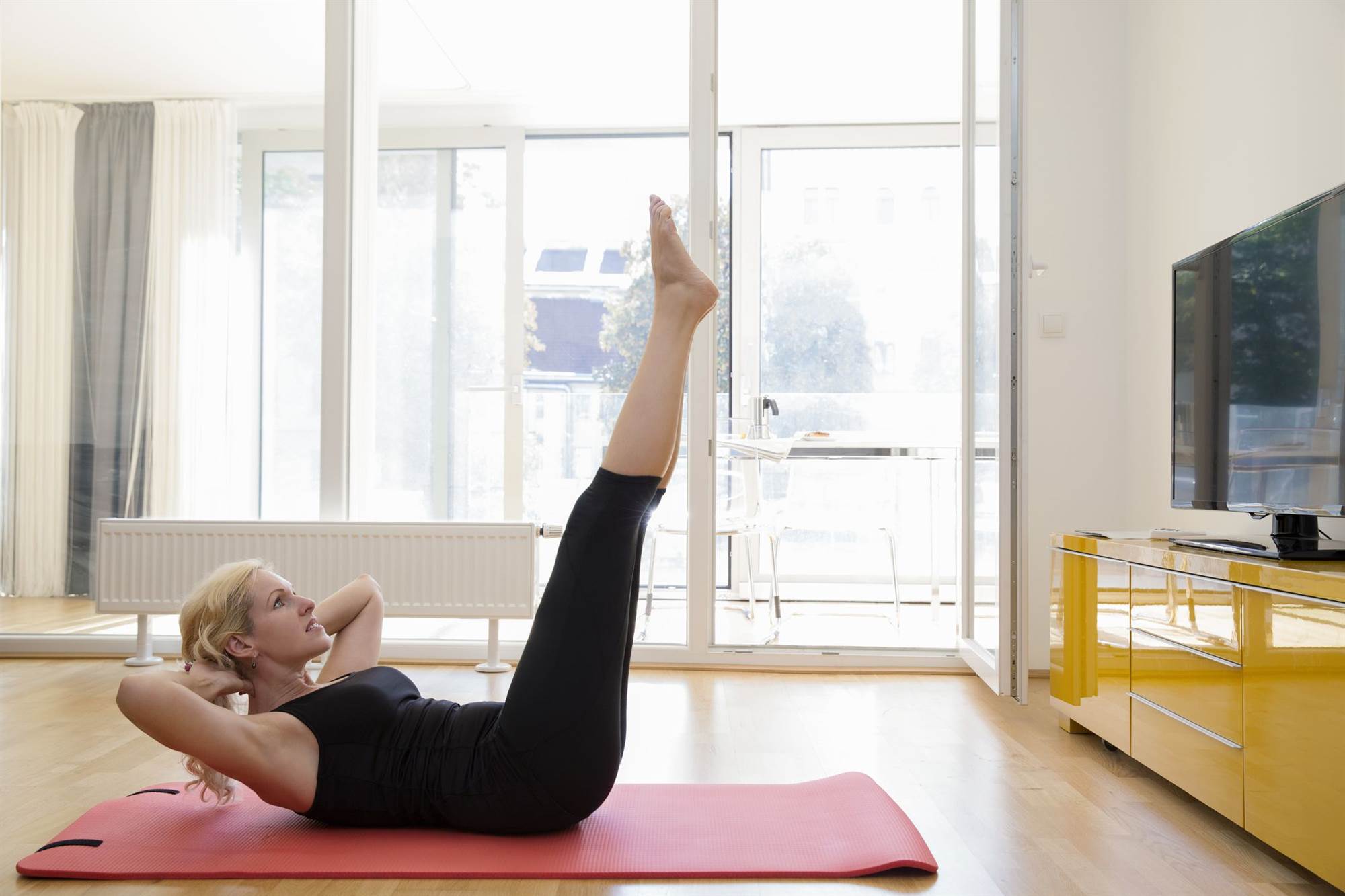
Paul Bradbury ©Getty Images
Work out while watching TV
When you get home from work, it's so easy to just collapse onto the couch and mindlessly watch TV while you unwind from the day... but you can use this time to avoid even more sitting and squeeze in a little workout.

Paul Bradbury ©Getty Images
Take breaks when watching TV
Instead of sitting through commercials, jump up and do that housework you've been putting off, like starting the laundry, washing dishes, or sweeping the floor. If you're streaming TV, take a break every 15 minutes to get moving.
It's not just good for you; you'll feel so much more satisfied and productive by the time your show is over.

Paul Bradbury ©Getty Images
Set a reminder to take breaks
Sometimes work can really suck you in, and before you know it, hours have passed with you just sitting at your desk. Set an alarm on your phone to take a break every 30 minutes - get up and walk to the bathroom, go grab water from the kitchen, or simply stand by your desk and stretch for three to four minutes.

Paul Bradbury ©Getty Images
Find a canine friend
If you already own a dog, you know they pretty much force you to go outside for daily walks. So it's not really a surprise that dog owners live healthier lives overall, with a much lower risk for cardiovascular disease and lower mortality rates, according to one 2017 study. If you don't have a furry friend, consider dog-walking for extra cash on the side, and let friends and family members know you're more than happy to walk their pups if they ever need it.
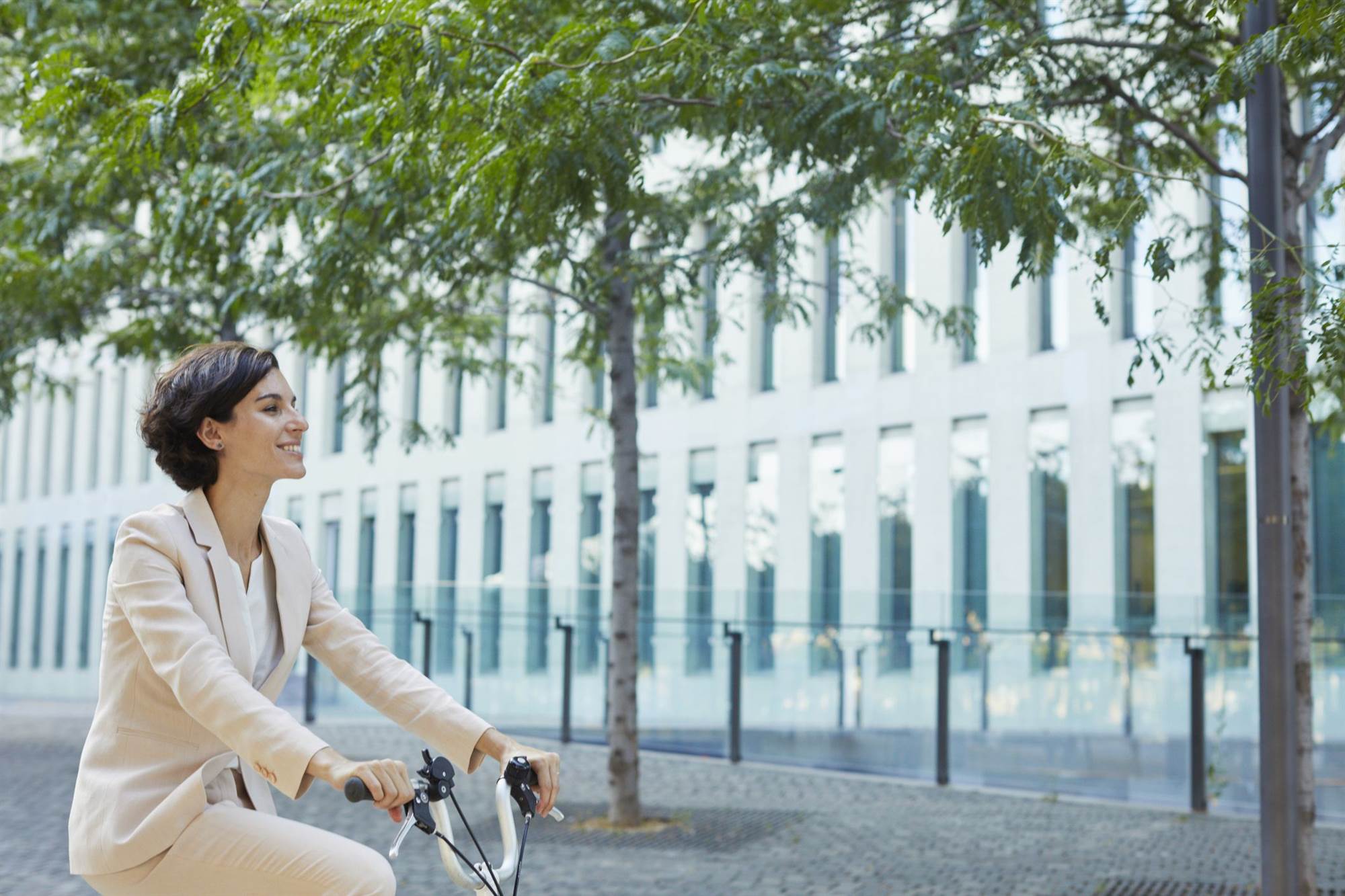
Paul Bradbury ©Getty Images
Bike to work
If the weather is nice and you live within a few kilometres, bike to work! "Cycling puts very little impact on your joints, so it's kind to your body," bike fit specialist Andrew Pruitt, told Prevention in a previous interview. "Even if you have pain walking, you can still ride a bike, because it isn't weight-bearing." It's also an amazing cardio workout and a great way to meet new people. Note: you may want to wear workout clothes for the ride and bring work-appropriate clothes to change into once at the office.

Paul Bradbury ©Getty Images
Skip the elevator and take the stairs
This one's a classic for a reason. Unless you're carrying a heavy load, try to take the stairs instead of the elevator, especially if you're only going up a few floors. Look for an apartment building that's on a floor you'd be willing to walk up to regularly, and when you book hotels, ask to be on a lower-level floor so you can take the stairs. This is a simple, everyday trick to burn kilojoules and tone your legs.
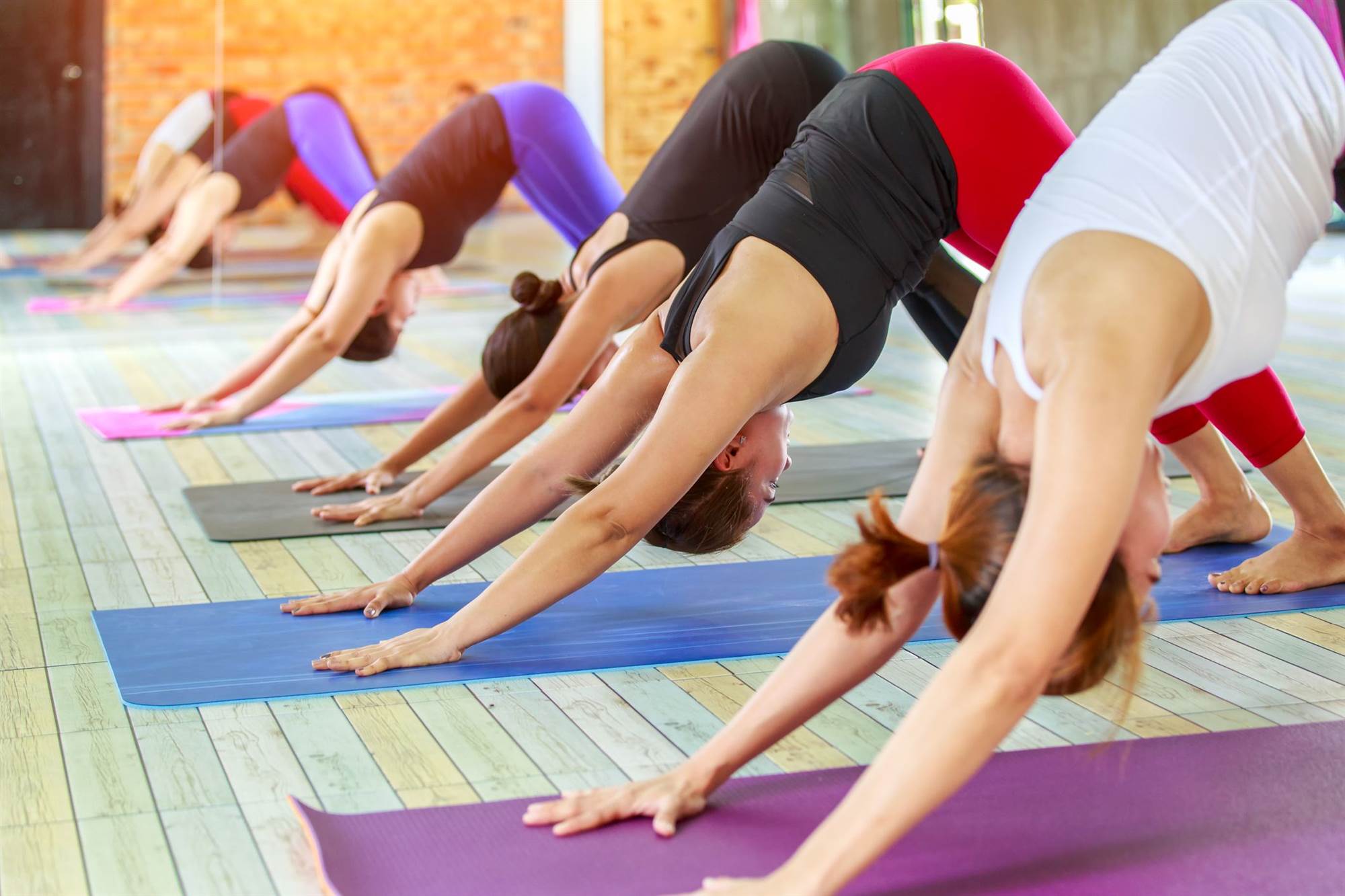
Paul Bradbury ©Getty Images
Join a fitness class during lunch
If you normally spend lunch eating at your desk, use that free time to get moving instead! Squeezing in a short, high-intensity workout during lunch can help you beat that 3pm slump and leave you feeling energised for the rest of the day. Find a class near work or hit up your office gym, if you have one. A few tips: Bring deodorant, face wipes, and a change of socks and underwear, try to stay on your feet (you spend enough time sitting), and go with a group for extra motivation.

Paul Bradbury ©Getty Images
Stand during meetings
Long meetings can leave you stuck sitting for hours at a time. If it's fine with your colleagues, ask to stand so you can stretch your legs during the meeting. You'll be more attentive to what's being discussed, and you can always stand near the back to avoid distracting anyone.
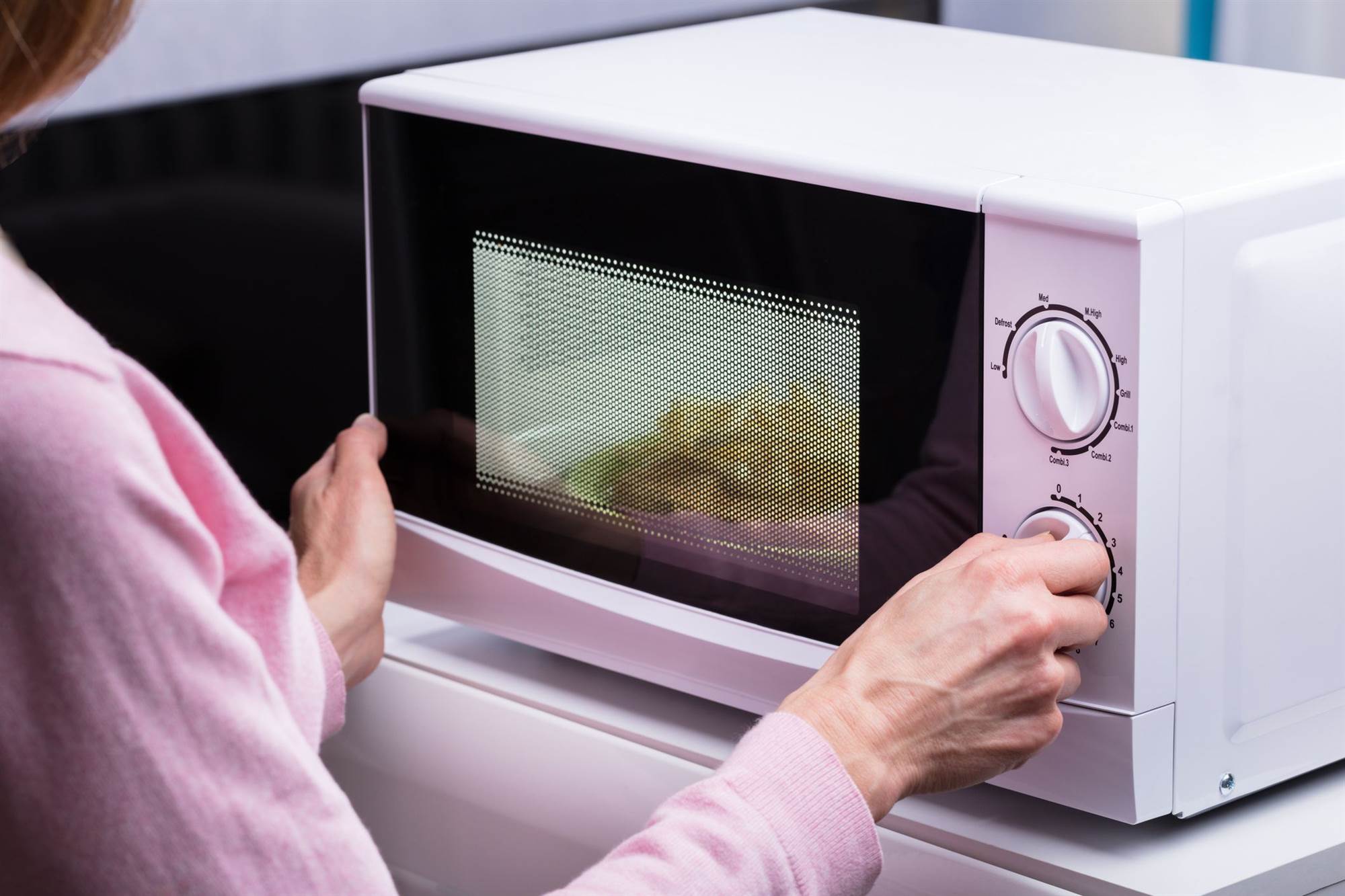
Paul Bradbury ©Getty Images
Use waiting time wisely
While you're waiting for food in the microwave or for papers to print, don't return to your desk. Stand and do some gentle stretching. Calf raises are an excellent way to tone your calves without hurting your back. If it's a more private area, you could even do a few squats or jumping jacks, just to get your blood pumping.

Paul Bradbury ©Getty Images
Plan get-togethers around being active
You don't have to meet up at a restaurant or bar every time you hang out with friends. Instead, invite your friends to go on a picnic in a local park, join you for a yoga class, or stroll through a museum for a few hours. Not only is it a healthy way to keep moving; it also saves you money and kilojoules from doing happy hour every time.
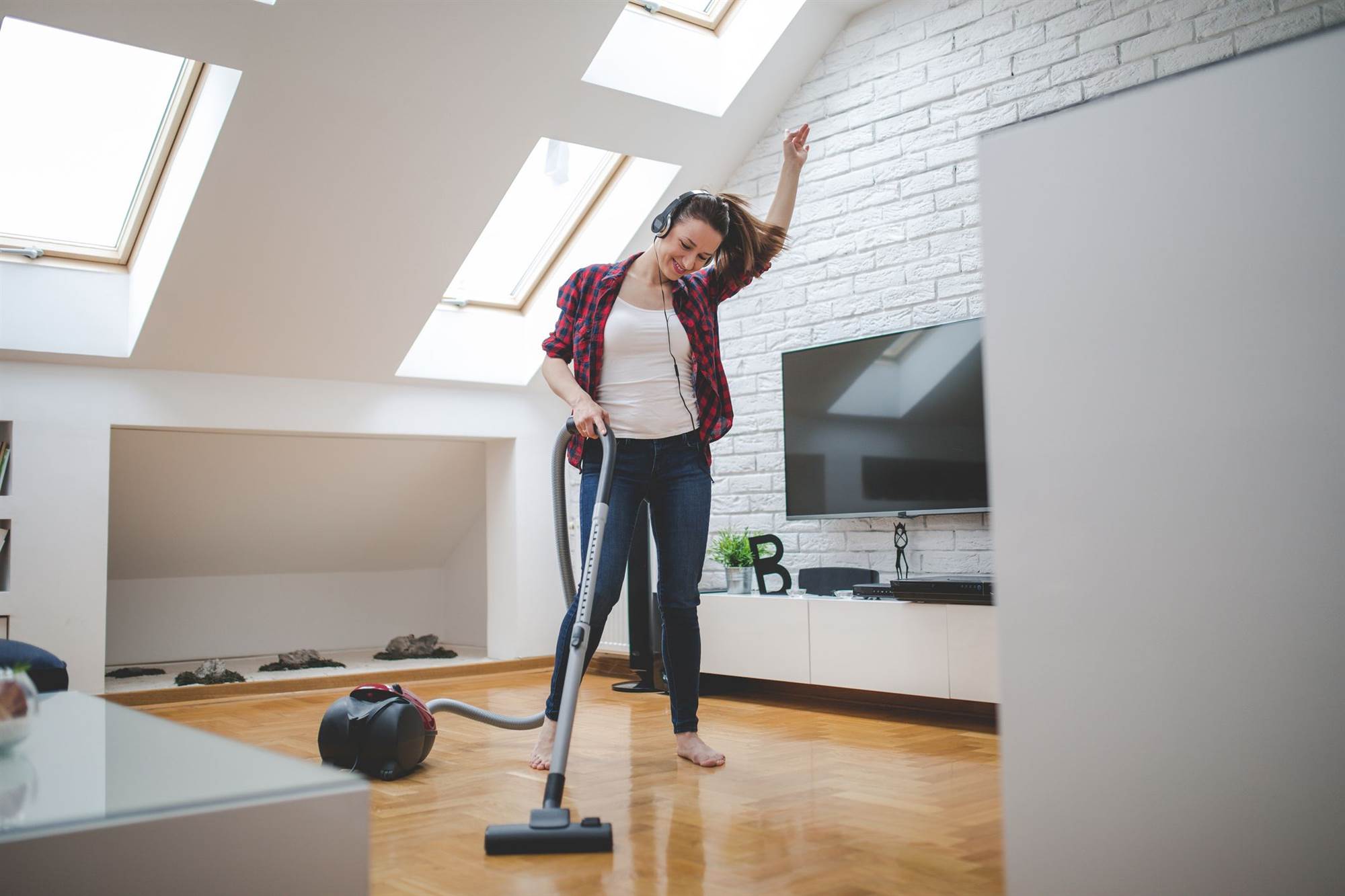
Paul Bradbury ©Getty Images
Turn household chores into a dance party
It sounds cheesy, but dancing can make mundane tasks like vacuuming or doing dishes so much more fun; plus, it's a great kJ-burner and engages your entire body. One Swedish study even found that dancing improved mental health, mood, and stress levels in a group of girls taking weekly classes. With both physical and mental benefits, dancing is a great way to move your body more, no matter what you're doing.

Paul Bradbury ©Getty Images
Wear a fitness tracker
Fitness trackers have been around for years, and they've proven to be effective for many people by giving them a tangible goal (a certain number of steps) to reach each day. The devices can be a helpful reminder to move more throughout the day and can motivate you to take an extra lap around the office or your neighborhood.

Paul Bradbury ©Getty Images
Run errands on foot
If you live in an urban area where places like the grocery store and post office are within walking distance (about three kilometres), make a point to walk to those places instead of hopping in the car. It's not just good cardio; carrying bags or packages also makes for a great arm workout, and you can invite your family members or housemates to tag along for company (and to help carry things).

Paul Bradbury ©Getty Images
Tackle outdoor chores yourself
While it's definitely easier to pay someone to come mow your yard, pull weeds, and rake leaves, you'll save money and work up a healthy sweat by doing it yourself. Turn it into a fun family activity by getting the entire household involved and assign everyone a specific task.

Paul Bradbury ©Getty Images
Stand during your commute
If you rely on public transport like a bus or train to go about your day, make an effort to stand during the commute, even if there are open seats. Especially if you've spent all day sitting at work, standing for a half-hour ride can be a welcome change for your legs.

Paul Bradbury ©Getty Images
Take date night outdoors
When you've been in a relationship for a long time, Netflix and takaway may become the ideal date night, but planning dates around an outdoor activity will get you and your partner off the couch and help foster a more active lifestyle. Hiking, camping, and a walking tour of your city are easy (and healthy) ways to spend time together while exploring somewhere new.

Paul Bradbury ©Getty Images
Stretch when you feel stiff
If you ever feel yourself getting stiff or achy, stretch! Years of hunching over a desk puts major pressure on your joints and tissues. "Stretching improves blood flow to muscles and tendons, which can tighten with inactivity," sports medicine specialist Steven Sampson told Prevention previously. "Strengthening the muscles around our joints helps alleviate stress and inflammation."

Paul Bradbury ©Getty Images
Take a walk after dinner
After a particularly heavy meal, consider taking a walk outside afterward, which aids with digestion, burns more kilojoules, and can even improve your blood sugar levels. If you bring your significant other along, suddenly it becomes a romantic evening stroll.

Paul Bradbury ©Getty Images
Sign up for a charity run
Grab your friends and run for a cause you believe in with any of the countless charity runs that are held across the country each year, like Relay for Life, which raises money for the Cancer Council.

Paul Bradbury ©Getty Images
Shop your local stores
Online shopping is so convenient to the point that it can become addicting. Kick the habit by heading out to your local shops next time you need a new pair of shoes or fancy dress. Sometimes you'll find a hidden gem in your neighbourhood thrift shop or boutique; plus, a day of browsing shops makes for an excellent walking workout.

Paul Bradbury ©Getty Images
Hit up a workout class before brunch
If brunch is a major part of your weekends, no need to cut that out completely. Instead, convince your friends to try a new workout class together before heading to the restaurant. You'll feel so much better getting your workout out of the way pre-meal and you can turn it into a weekly activity for your entire group.
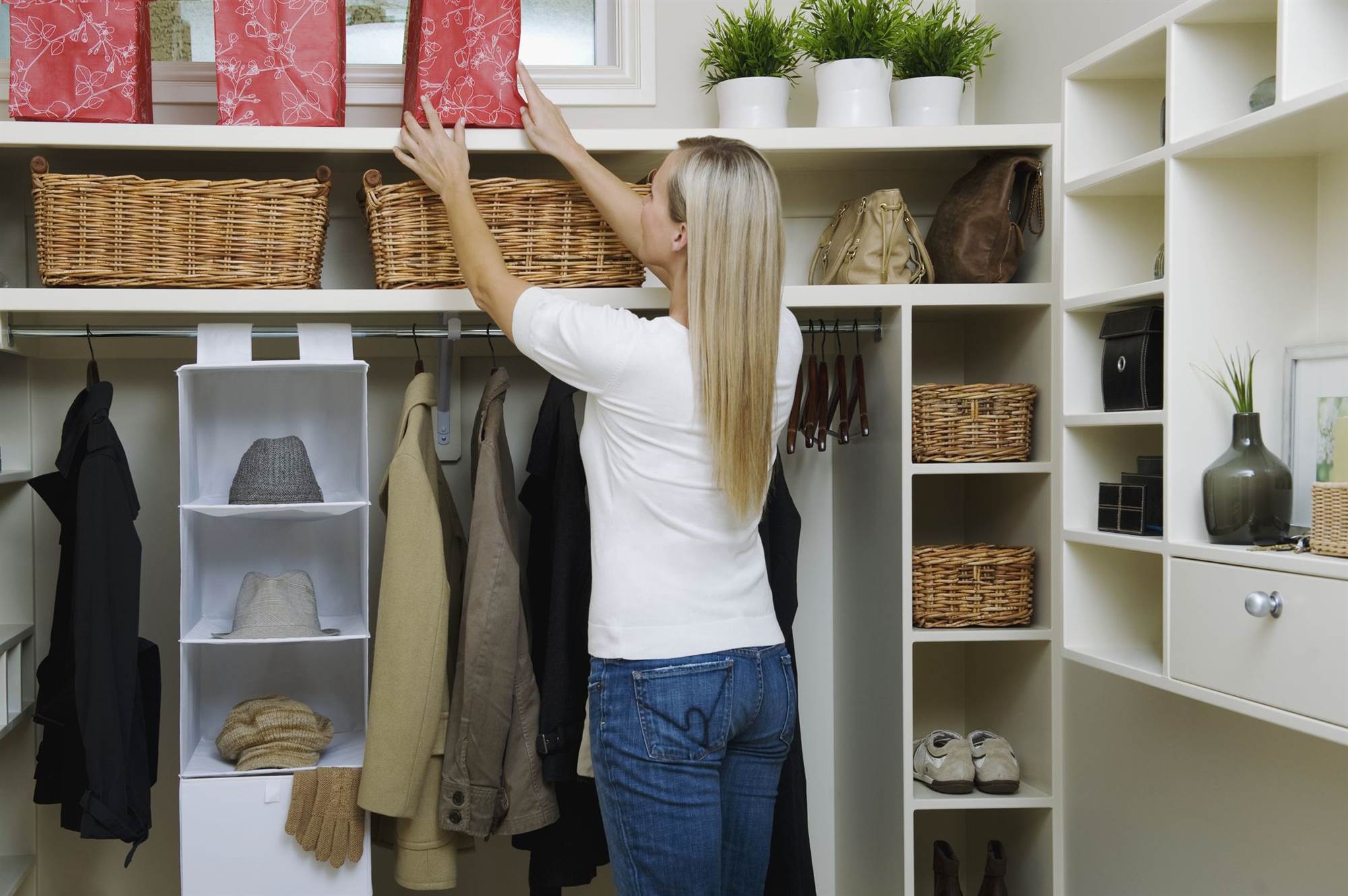
Paul Bradbury ©Getty Images
Declutter regularly
While "spring cleaning" may be limited to one season, decluttering should really be an ongoing process. Take a little time every day to organise or put away things that are laying around your home. If you treat it as a regular chore and not something that gets done once or twice a year, you'll skip the dread of knowing that things are piling up; plus, you'll spend less time just sitting around watching TV.






